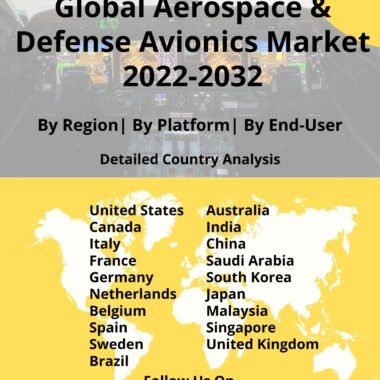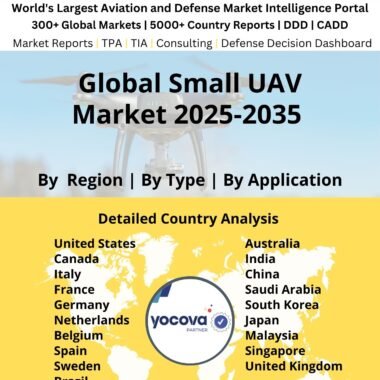Description
Drone Simulation Market
The drone simulation market in defense is experiencing significant growth due to the increasing reliance on unmanned aerial vehicles (UAVs) in military operations. As drone technology advances, defense organizations are prioritizing the need for effective training solutions that can simulate a wide range of operational scenarios. Drone simulators are becoming essential tools for training pilots in handling complex missions, improving decision-making, and enhancing operational readiness, all without the risks and costs associated with live training. A key factor driving the market is the rise in the use of drones for surveillance, reconnaissance, combat, and logistics operations. Military forces are increasingly integrating drones into their strategies, which has prompted the need for comprehensive training systems. Drone simulators allow pilots to experience and respond to a variety of conditions, including adverse weather, electronic warfare, and enemy countermeasures, enabling them to be better prepared for real-world missions. Furthermore, the demand for cost-effective, scalable, and flexible training solutions is driving the growth of the drone simulation market. Live-flight training for drones can be expensive and logistically challenging, particularly when considering the high operational costs of drones and the risks involved. Simulators provide a more affordable and safer alternative while offering repeatable, high-quality training. As military forces continue to modernize and expand their drone fleets, the demand for advanced drone simulation systems will likely continue to grow.
Major factors driving Drone Simuation Market Growth
The growth of the drone simulation market in defense is being driven by several key factors. One of the primary catalysts is the increasing use of unmanned aerial vehicles (UAVs) across various military operations, such as surveillance, reconnaissance, intelligence gathering, and combat missions. As drones become an integral part of modern defense strategies, the need for comprehensive training systems has surged. Drone simulators allow operators to safely practice in diverse and challenging scenarios, ensuring they are well-prepared for real-world situations. Another significant driver is the rising demand for cost-effective and efficient training solutions. Live training with actual drones is expensive and presents risks to both the equipment and personnel. In contrast, drone simulators offer a more economical solution, enabling repeated training without the high operational costs associated with live drone flights. This makes simulators an attractive alternative for defense forces looking to optimize training budgets while maintaining operational readiness. Technological advancements are also propelling market growth. The integration of artificial intelligence (AI), virtual reality (VR), and augmented reality (AR) into drone simulation systems enhances the realism and effectiveness of training. These technologies create immersive and interactive environments that mimic real-world conditions, providing operators with a highly detailed and dynamic experience. AI-powered simulators can also adapt to individual trainees’ performance, ensuring personalized and optimized learning experiences.
Trends influencing the Drone Simulation Market Size
Several trends are influencing the growth of the drone simulation market in defense, contributing to its expanding size. One of the primary trends is the increasing integration of drones into military operations. Drones are being deployed across various domains, including surveillance, reconnaissance, combat, and logistical support. As defense forces incorporate more UAVs into their strategies, the demand for simulation systems that can train drone operators in complex mission scenarios is rising. These systems enable operators to practice in a safe, cost-effective environment before engaging in real-world operations. Another trend driving the market is the advancement of simulation technologies. The inclusion of artificial intelligence (AI), virtual reality (VR), and augmented reality (AR) into drone simulators is significantly enhancing training capabilities. AI-powered simulations can offer dynamic, adaptive environments that change according to the trainee’s performance, optimizing the learning process. VR and AR technologies provide immersive training experiences, enabling operators to engage in realistic combat, surveillance, or emergency response situations without leaving the training facility. The growing focus on cost-effective training solutions is also influencing the market. Live drone training can be expensive, especially when considering operational costs, wear-and-tear on drones, and potential risks. Simulators offer a more affordable alternative, providing repeatable training scenarios without the need for actual flight hours. This makes drone simulation an attractive option for defense organizations seeking to reduce training expenditures while maintaining high standards of readiness.
Drone Simulation Market Forecast & Dynamics
The drone simulation market in defense is poised for continued growth, driven by increasing demand for advanced training solutions and the expanding role of unmanned aerial vehicles (UAVs) in military operations. As drone technology evolves, defense forces are increasingly relying on simulations to train operators in a variety of complex, high-risk scenarios. This trend is expected to intensify over the next few years, as military forces continue to adopt UAVs for tasks such as reconnaissance, surveillance, and combat missions. One of the key dynamics influencing the market is the growing sophistication of drone capabilities. Modern drones are now equipped with advanced sensors, communication systems, and weaponry, requiring highly specialized training for their operation. Drone simulators are increasingly being used to provide realistic, risk-free environments where operators can practice flying and mission execution, improving their skills in handling UAVs under diverse conditions. The integration of technologies such as virtual reality (VR), augmented reality (AR), and artificial intelligence (AI) into drone simulators is enhancing their effectiveness. These technologies enable more immersive and adaptive training experiences, helping operators to gain critical hands-on experience in simulated environments that closely mimic real-world combat or surveillance situations. This trend is expected to continue, with future simulators becoming even more sophisticated, incorporating machine learning algorithms to adjust to a trainee’s skill level and offer personalized challenges.
Drone Simulation Market Analysis for Recent Developments
Recent developments in the drone simulation market for defense have seen significant technological advancements aimed at enhancing training capabilities for unmanned aerial vehicle (UAV) operators. One of the key trends is the integration of artificial intelligence (AI) and machine learning into drone simulators. These technologies allow simulations to adapt in real time to the performance of the operator, providing a more tailored and effective training experience. AI-powered systems enable trainees to engage in dynamic and unpredictable environments, replicating complex combat and surveillance missions with greater precision. The incorporation of virtual reality (VR) and augmented reality (AR) into drone simulators has also advanced considerably. These immersive technologies offer highly realistic and interactive training experiences, allowing operators to practice navigating drones through challenging environments and scenarios, such as adverse weather conditions or hostile territories. By offering a safer, more controlled environment for practice, VR and AR simulations reduce the risks associated with live-flight training and allow for repeated practice of high-risk maneuvers. Additionally, drone simulation platforms are increasingly being used to train operators for a wider array of missions, such as counter-UAV operations, electronic warfare, and multi-drone coordination. As drone fleets become more complex and are integrated into broader military strategies, the need for versatile simulation systems that can accommodate diverse training requirements is rising.
![Global_Drone_Simulation_Market[1] global-drone-simuation-market](https://aviationanddefensemarketreports.com/wp-content/uploads/2024/12/Global_Drone_Simulation_Market1.jpg)



